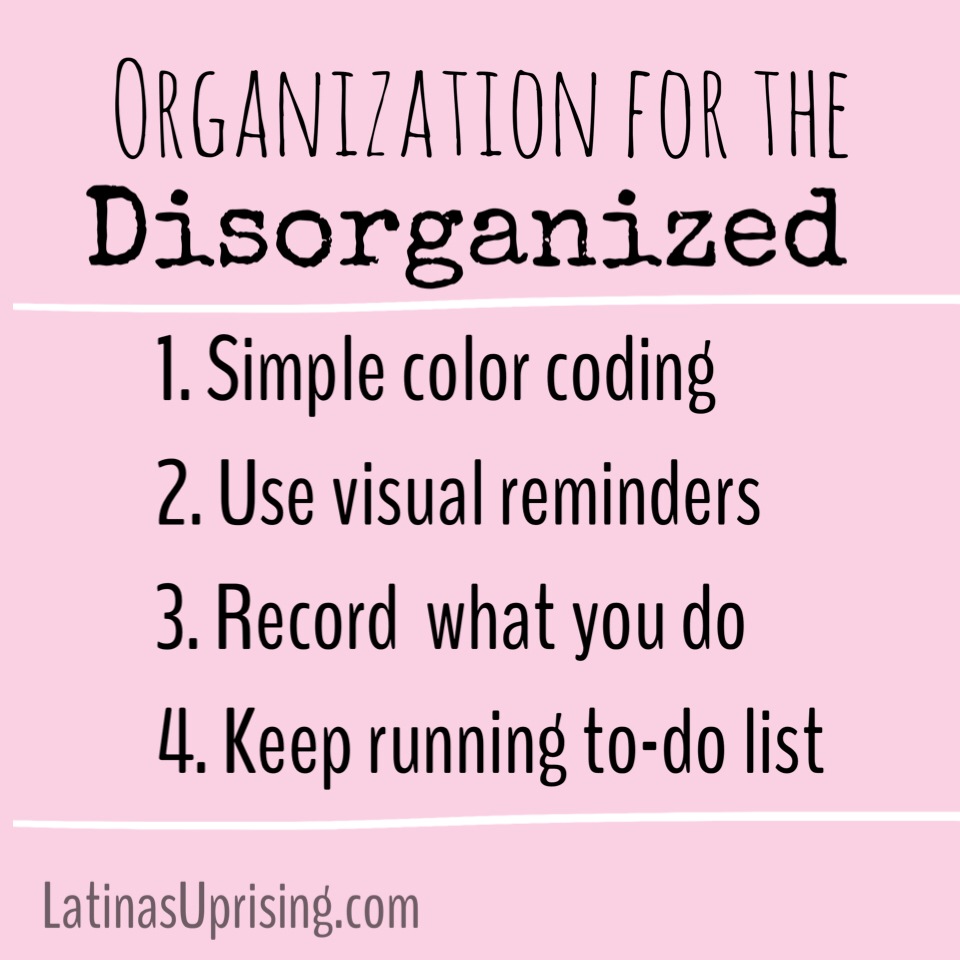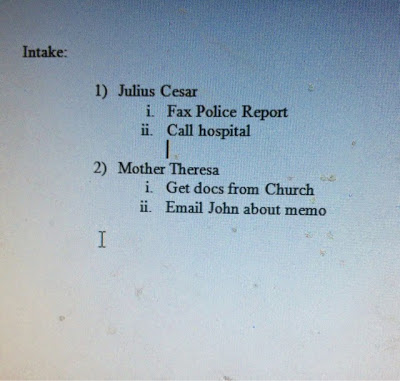Organization for the Disorganized
What I really like about the beginning year is that it’s a fresh start for me to try to work on improving my organization at work. For many type-As, it’s pretty easy to stay organized, but I am basically the opposite of a type-A when it comes to organization. My motto is that there is usually a method to my madness, though on the surface my office could seem cluttered and well…disorganized! Because I know what my tendencies are when it comes to organization, I have developed sensible, easy, and visual tools that have kept me right on track at work.
Some of these tips may not work in places where you have to keep time by the minute, but I think they’re useful to almost all fields; especially for those in the public interest sector. At my work, aside from filing quality work for clients in a timely manner, tracking what I’m doing is the biggest priority. Here are the four ways I stay on schedule:
One. Simple Color Coding. I mean, everyone uses Outlook, right? Or whatever work system you use. I don’t think it’s a huge tip to say that you should list all appointments, meetings and deadlines on your work-based calendar. But, what I have found useful is to color-code, but to limit myself to only two colors. This means that I’m only highlighting the important deadlines and don’t get overwhelmed when I see a sea of color (or forget what it means). Yellow means that that task is due, and I change it to green when it’s complete. At a glance, I’ll be able to see how many deadlines I have each month so that I can prepare and work on each task according to the due date.
Once I’m finished, I switch the color to green. I don’t like to erase deadlines (even when they’ve been met) because sometimes I need to look back and review, and it’s harder to remember what was going on if you erase everything. I also like seeing the green because it means I no longer have to worry about it.
Two. Make visual reminders. Like many people, I saw this very cute goals/assignment pin on pinterest and I copy-catted it right away.
Originally, I used it to keep track of the assignment I would give interns (one summer I worked with four different students–it was hectic). Now, at the beginning of each month, I write down at least 6 major goals I want to finish in that month. I have found that not only does it help keep me constantly aware of things I need to work on, but it’s such a relief and feeling of accomplishment when I peel off the post-it because that task is complete.
Three. Record what you do. I guess I’m old school in that I use paper and notebooks. I write down almost everything in a monthly notebook. I write notes while I’m having telephone conversations; my daily to-do lists; I write down ideas while I’m researching; I handwrite my outlines for responses/memos; and I write notes during meetings and intakes with clients and my supervisor/staff.
The reason I have found this useful is because there have been instances when there’s a question as to why a decision was made, and I can go back and look at my notes. In fact, I had to do this when my boss had a question about a decision we made and I was able to look at my notebook from July 2011 (!) and used the notes to explain our basis for the decision. We do have a internal data system where we have to keep track of the work we’re doing in each case, but that system isn’t made to encompass everything that my notebooks can record.
The downside is that I have notebooks filling up an entire cabinet drawer (see above). But so far, it’s a manageable inconvenience. You may not have to go so far as a notebook per month, but I think keeping detailed track in some chronological order is a great way to have the ability to recall and remember what you’re doing and what you’ve accomplished.
Four. Keep a running to-do list. Not only am I old school, but I also lack the latest in technology. I mean, it was just a few years ago my agency finally stopped using Word Perfect. Once I started working, I realized that I needed to keep a detailed to-do list for every case or I’d get lost in my case-load, or worse, miss an important deadline. For me, the easiest and simplest software has been using Word doc. I know, how medieval. But honestly, we still use old PCs, our systems aren’t always up-to-date, so Word is the safest, most reliable tool. I divide my cases by the level they’re at in the immigration process. For me, it’s usually: Intake, Need to File, Pending, and other miscellaneous categories. Under each topic, I put the clients names and under the client’s name I write a to-do (with like 3-5 tasks, max).
For example:
Almost everyday, I got through my very long list (it’s like 8 pages, but this part takes 4 minutes tops). I go through the list, edit all the tasks (like, if I faxed the report yesterday for Julius, I would erase that task and add another, if necessary). Then once it’s updated, I take my trusty notebook and write down a to-do list for the day.
Ta-da! It may seem like a lot of work, and like I said for Type-As that are naturally capable and traditionally organized this may be unnecessary. But for the rest of us, I have found this system to be incredibly useful. What do you do to stay on task?




